Electric cars have gone from the realms of automotive fantasy to real-world reality in just a few years. In global terms, the pioneering i3 is arguably one of the most established players in an admittedly small – and exclusive – segment, with Nissan’s Leaf not far behind.

Color: Antigua blue
However, It’s been Elon Musk’s Tesla that has consistently hogged the electric vehicle headlines – if not always for the right reasons. Musk foresaw the potential of electric cars long before Dieselgate and environmental pressures forced the mainstream auto industry to accelerate its EV efforts.
Back in 2012, US motorists could already buy a Tesla S with a 500km-plus range, seating for four, and sports car-rivalling dynamics. Those are attributes the BMW i3, for example, still can’t match.
It’s the 500km range that is the Tesla’s most appealing attribute. How far you can drive on a single charge has always been the key consideration in determining the viability of pure electric cars for everyday use.
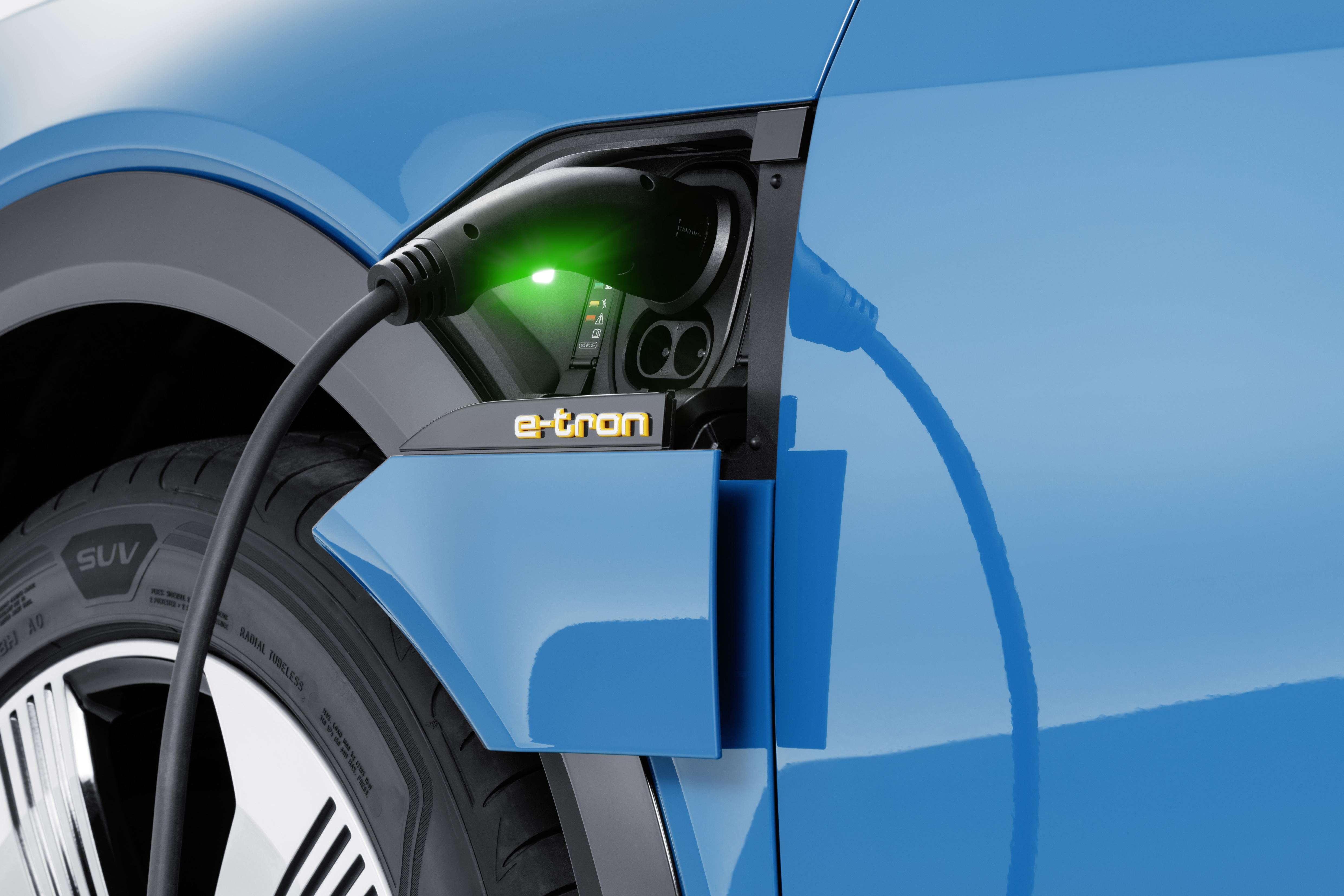
Detail
Audi’s SUV-proportioned e-tron, which should reach South African shores some time in 2019, hopes to address many of the concerns would-be buyers of an all-electric car might have.
Chief among those would be that malady all too familiar to existing electric car owners: range anxiety. While we’re all used to filling up our vehicles with fuel whenever needed, charging an electric car’s battery is an altogether different and less convenient affair – at least for now.
Using a conventional AC charger, it can take around eight hours to charge a current-generation battery like the 33kWh battery pack in the BMW i3. Link that to a 200km range, and the operating limits become obvious.
A 200km range might suffice for the average city commuter. But what if you need to travel further than anticipated on a given day? And let’s not forget that the operating range itself is a moving target, determined as much by traffic conditions and driving style as by the battery’s charge state.
Two key factors determine the viability of an electric vehicle for everyday use: the real-world capacity of the battery itself, and how quickly it can be charged.
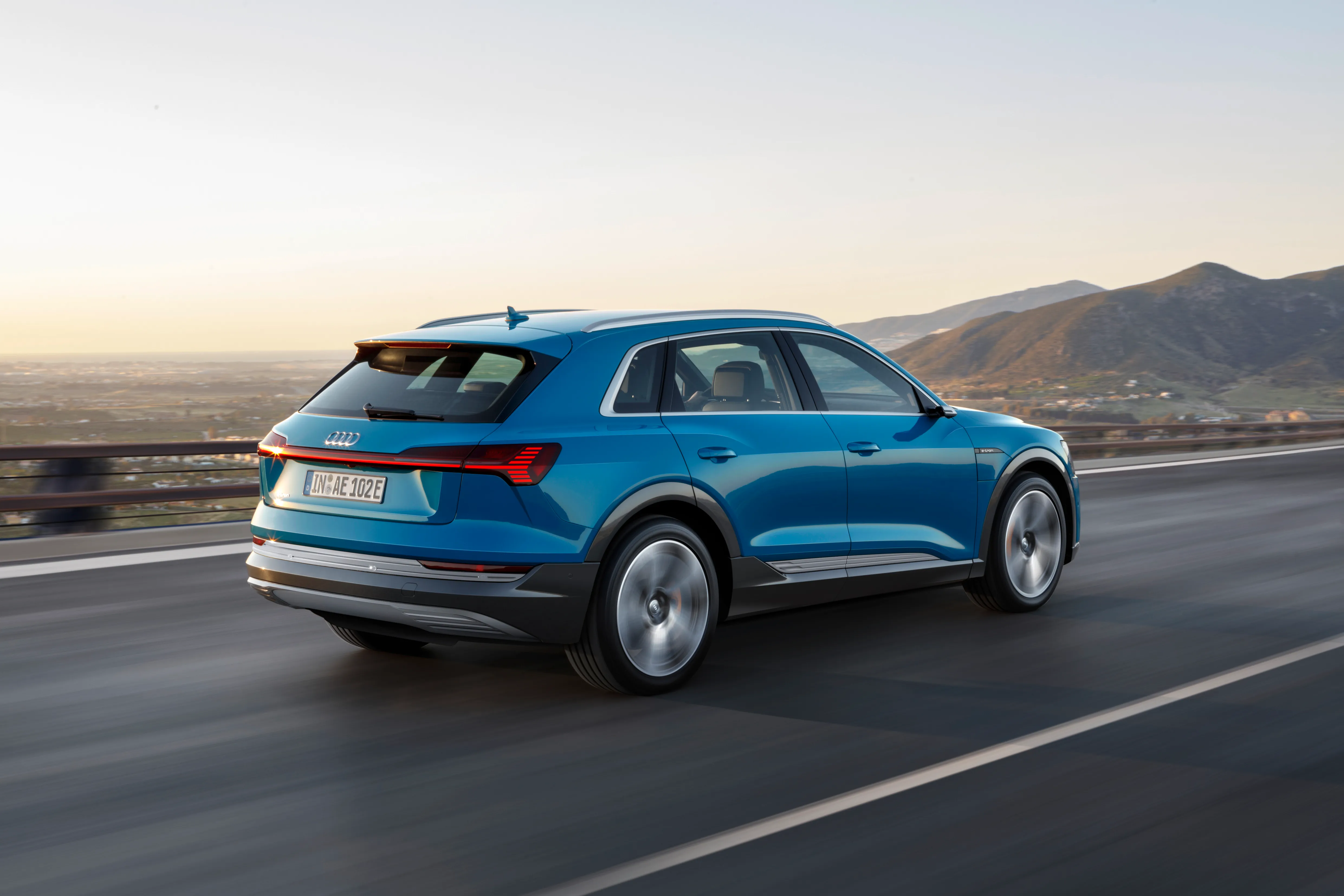
Color: Antigua blue
While a battery with an extended range greatly enhances the electric vehicle’s application, being able to recharge it in a relatively short time is equally important, because it effectively removes the range limitation.
As Tesla has already proven, extended-range batteries are a reality – and they are improving all the time.
The Audi e-tron is equipped with a 95kWh battery pack promising a real-world range of more than 400km. To achieve that capacity, the battery is huge – about the size of a double bed – and is mounted under the floor of the vehicle.
The 700kg lithium-ion battery is made up of 36 shoebox-sized modules, each containing 12 cells. The battery design maximises the number of modules within the available volume, and has been designed for a long service life with ample and consistent charge and discharge cycles.
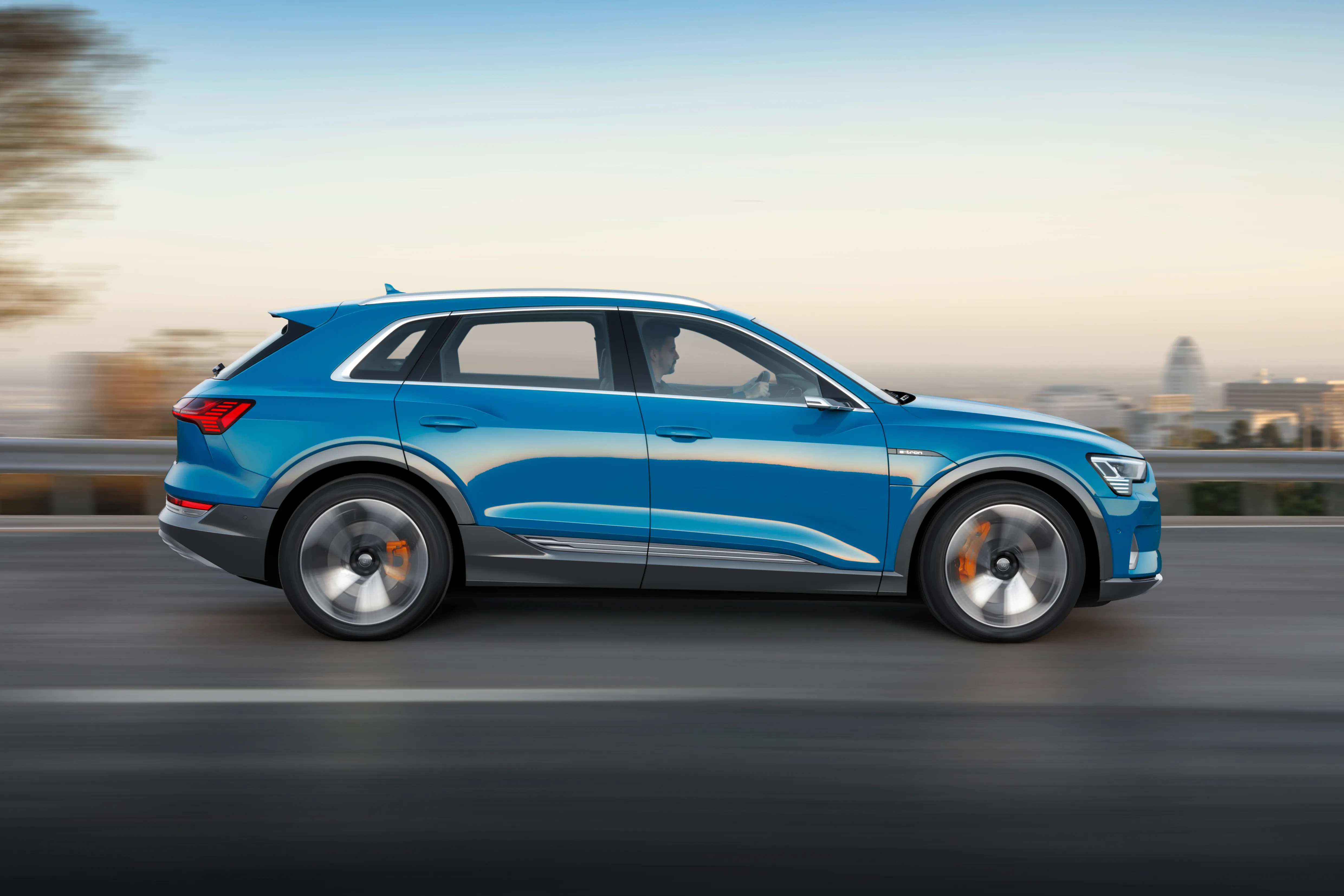
Color: Antigua blue
The battery is managed by a control system that oversees charge status, power output and thermal management. The controller interfaces with the rest of the electric drive system, including the electric motors.
Thermal management is an unexpectedly important aspect of maximising battery and charging performance. The battery needs to be kept in an optimum temperature range of between 25 and 35 deg C, regardless of ambient temperature or operating conditions.
It also keeps the battery within that range while it’s being charged. Fast charging using high outputs creates a lot of heat, which is dissipated using a coolant fluid. The same fluid can also be used to heat the battery when ambient conditions are cold.
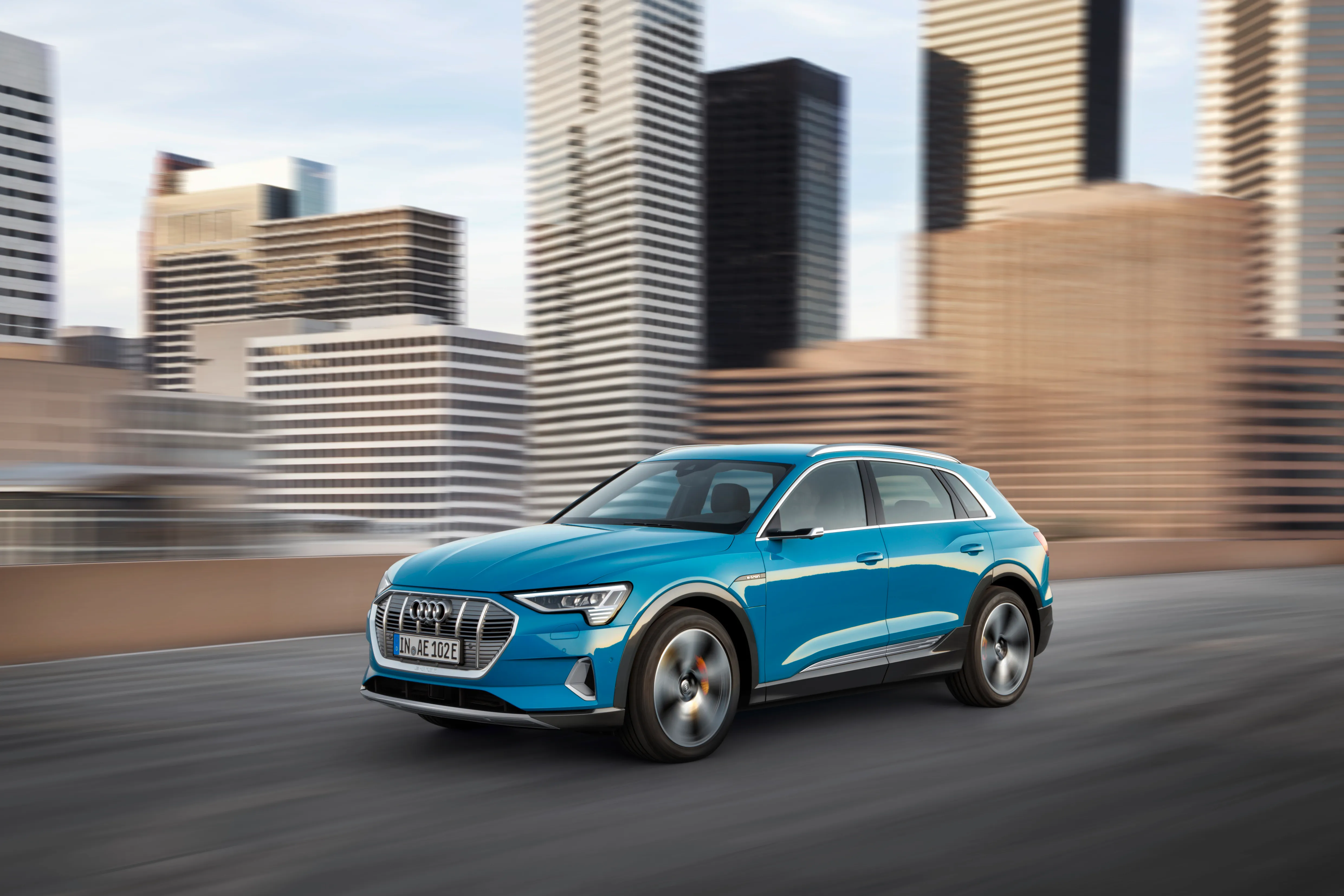
Color: Antigua blue
Charging is an intelligent process, with the charge rate adjusted according to the charge state of the battery and the ambient temperature. As the battery approaches fully charged status, the charge rate is reduced to prevent overcharging and overheating.
Interestingly, the battery also fulfils a structural role in the e-tron. The battery housing has an all-aluminium construction which is bolted directly to the vehicle’s aluminium space frame. It ups the body’s structural rigidity by 27%, benefiting handling and safety.
The e-tron’s single-charge range of more than 400km should be more than enough for the average motorist, even allowing for some extra-urban excursions and unplanned trips. But those planning longer journeys – Johannesburg to Durban, for instance – will need a way to charge their EV’s battery en route.
Charging options are typically divided into two categories – alternating current (AC) and direct current (DC). The Audi e-tron will offer both, as will most other new-generation contenders such as the Mercedes-Benz EQC and the Jaguar I-Pace.
AC chargers are compatible with normal domestic electricity systems – in other words, they allow for the car to be plugged into any AC wall socket. However, the downside is the charging time.

Luggage space
The e-tron’s standard AC charging system has a maximum output of 11kW, which translates into around eight hours of charging time. An upgraded, dedicated wall charger will improve the charging output to 22kW, almost halving the charge time – but we’re still talking around four hours.
Faster charge rates at dedicated charging stations are meant to address the needs of those EV motorists who cover distances that exceed the battery’s operating range. But again, not all charge stations are created equal.
While there are in excess of 65,000 charging stations in Europe, most are based on AC infrastructure, limiting the charge output and charge rate. Only a small percentage of stations offer fast charging, although that number will grow rapidly as demand increases.
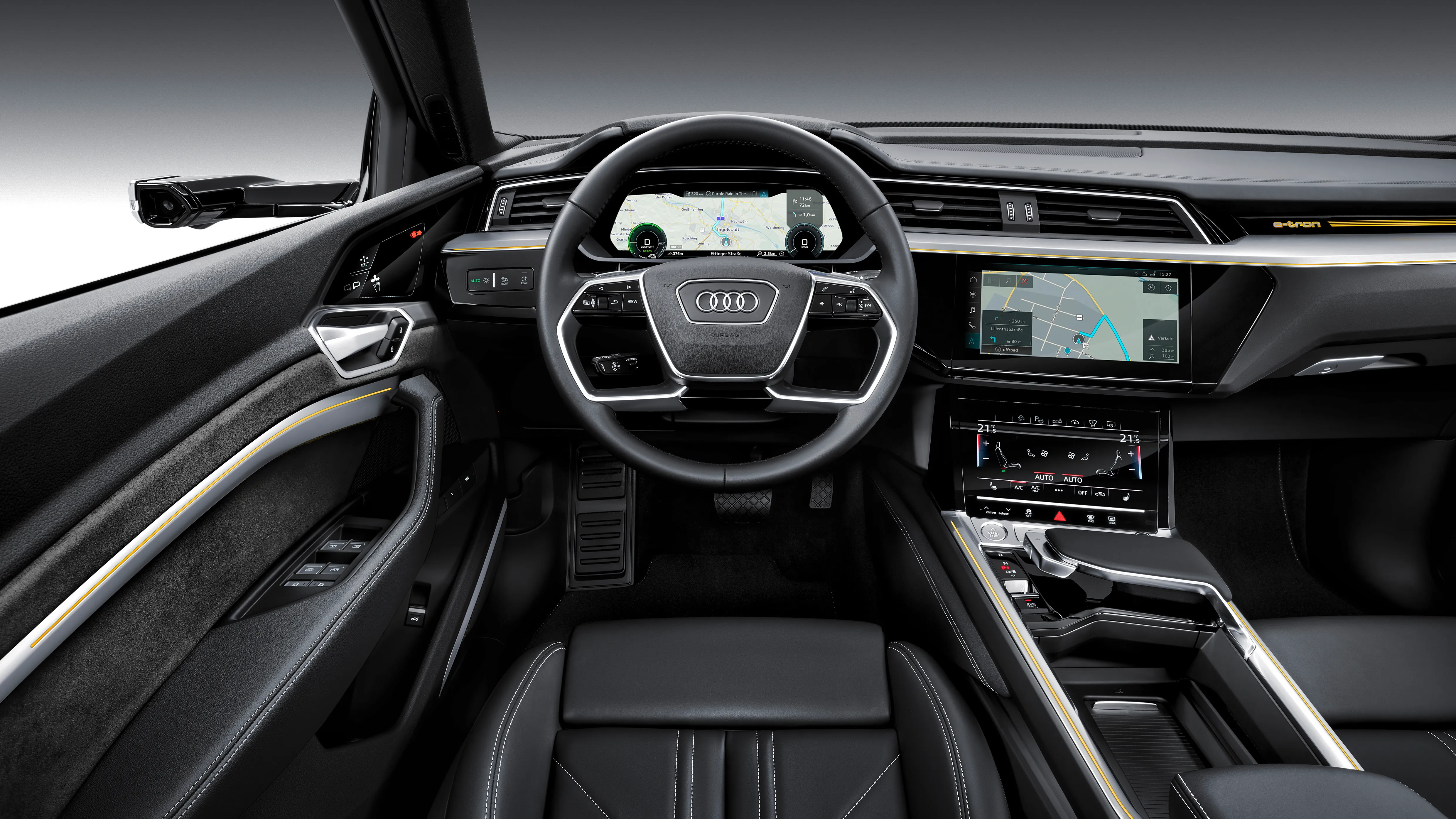
Interior
How fast is fast? A high-output DC charge station such as the ones being rolled out by the Ionity network in Europe can push up to 150kW to compatible battery systems. In the case of the e-tron, that will allow a full-battery charge time of less than 30 minutes – just enough for a comfort break and a cappuccino.
Ionity is a joint venture between the Volkswagen Group, including Audi and Porsche, as well as Daimler AG and Ford. Some 200 CD fast-charge stations should be up and running in Europe by the end of the year, with the network rapidly expanding as electric cars become more prevalent.
Ionity DC won’t be the only fast-charging network, but vitally, all stations, regardless of supplier, conform to a common European charging standard known as CCS (Combined Charging System). That will allow all compatible EVs to benefit from an ever-expanding charge station network.
In South Africa, the small take-up of electric cars has meant that public charge stations are few and far between. Jaguar, which is set to launch its I-Pace electric car in 2019, has recognised the lack of charging infrastructure as an opportunity.
The brand has partnered with GridCars to support a national network of 80-plus charging stations, many of which will be in urban shopping centres, and along primary national routes.
The majority will be fast-charge points with a 60kW output, which will allow a range top-up of 100km in about 20 minutes in the case of the I-Pace, and an 80% charge in 72 minutes.

Static photo,
Color: Antigua blue
The GridCars charge stations are CCS-compliant, which means that the network will be accessible not only to Jaguar I-Pace owners, but other EVs, including the Audi e-tron. And, as EV sales increase, the number of charge stations should increase, too.
With extended distances and relatively few charge stations in SA, route planning becomes an important element of EV operation locally.
Audi’s solution is a dedicated app that links GPS-based navigation to intelligent route planning based on the battery charge status, traffic conditions and available charge stations along the route.

Color: Antigua blue
The myAudi app interfaces with the e-tron, and the route information is continuously updated based on road and traffic conditions to make the most of the available charge. When the e-tron battery is being charged, the app keeps the driver informed about the charging progress.
As the Audi e-tron demonstrates, there’s a lot more to electric motoring than meets the eye. Just how mainstream electric vehicles will become in a market such as SA remains to be seen, especially considering that reliable access to electricity is key.
Also, because of the advanced technology involved, acquisition costs are likely to be higher, compared to a conventional, similarly sized and equipped vehicle.
However, it’s clear that the EV revolution is finally gaining traction. The Audi e-tron is one of the first of a new breed of electric vehicles propelling us towards a brave, new electric motoring future.
Motoring, it seems, will never be the same again… DM




















 Become an Insider
Become an Insider